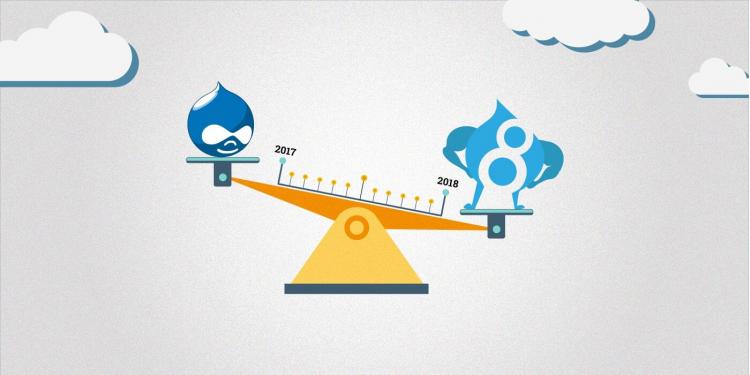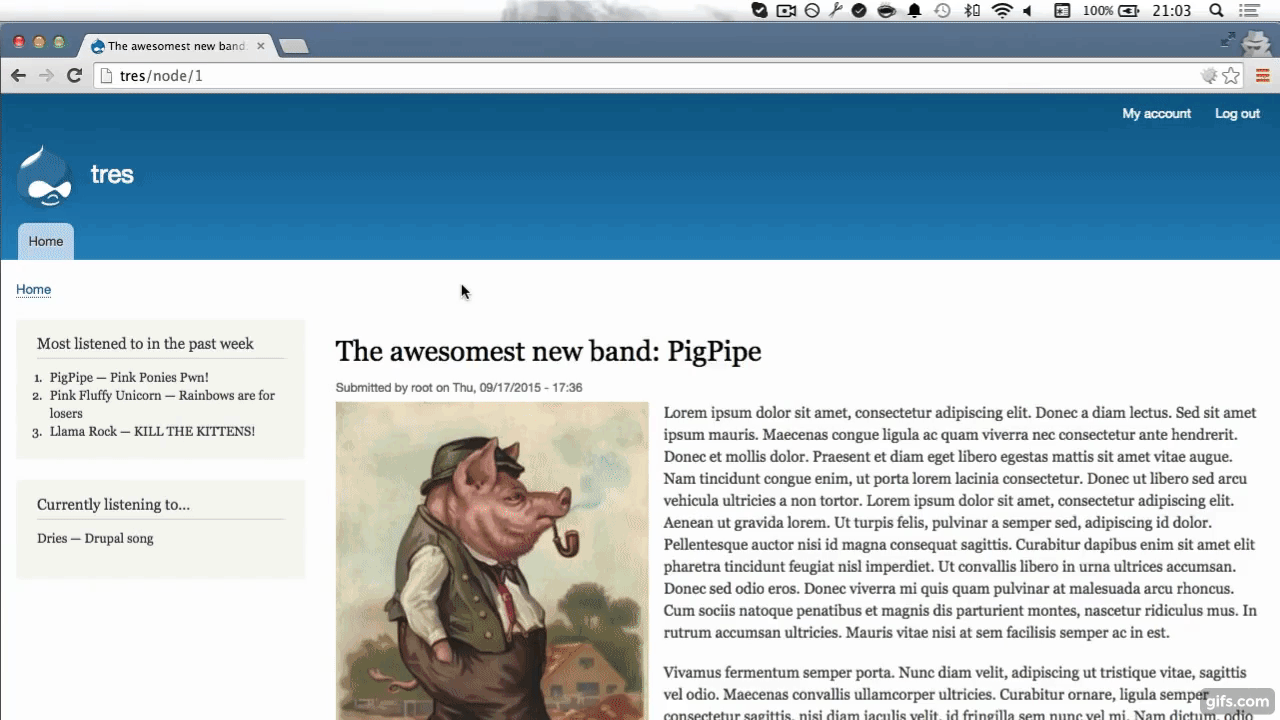So we’ve dumped a lot of information on you at this point, but it may still not be entirely clear what you should do with your outdated Drupal site. Ahead we provide general suggestions as well as what is pertinent to site owners for each version separately (Drupal 6 and 7).
To everyone on Drupal <8
We still have <3 for Drupal <8. Drupal 5, 6, and 7 got us to where we are. But here’s what we think you should consider about where you’re going.
- Plan 3 years out if possible. A stitch in time saves nine, and every minute of planning saves 10 in execution. They’re clichés, but true. Planning well requires a real dedication to strategic and investigative work; there’s no way around it. The upside is it allows you to be intentional about when to incorporate an upgrade, rather than being at the mercy of expiring security support. Organizational stakeholders are usually not compelled by upgrading for the sake of upgrading without other bells and whistles that come with it. An experienced partner can help shepherd the long-term planning process to provide guidance on efforts and things to consider. If you’re not working with an agency, do it yourself. Expect to redesign and do a software upgrade every 3-5 years and time those together if possible. Factor in upgrades to other systems that integrate with your website as well as any initiatives that may require functional improvements. Put all of these larger investments on a roadmap with a timeline and be clear about what components are dependent on or impacted by other components. With technical work, the devil is in the details, so a thorough assessment or “discovery project” is usually the best next step. Discovery work is light on upfront investment yet thorough enough to guide your organization through the many choices in your roadmap. This is really the best way to use your resources most efficiently. If your organization hasn’t historically done this, it handicaps you a bit at the moment, but if you’ll excuse one final cliché: there’s no time like the present.
- Be mindful of what you don’t need. We all get excited about the possibilities of new functionality. However, when things we’ve built have outlived their purpose, let them go. Given the complexity and interdependence of the tools we build, customizations take the form of mounting, insidious and potentially crippling technical debt if left unaddressed. The cost to upgrade the technical debt is likely the major cause for most of those who have not yet upgraded; it is certainly the case for all of our partners who haven’t. This debt can be hard to track, and it’s not something most agencies proactively share since they have a hand in creating it and can also be shortsighted. Ask for answers as to how your partner is managing your technical debt. If you don’t get good answers, keep asking. Another subset of this concept is that even if you want to maintain certain functionality, it needn’t be done in the with the same modules on the Drupal 8 platform. So don’t take a given module’s absence in Drupal 8 as a certainty that it cannot be efficiently achieved in Drupal 8. In many cases, it can.
- Training will be required. If you plan to build with the same team that built your <8 site, and they have not worked on any other Drupal 8 or object-oriented PHP projects, make sure you dedicate time and budget resources for substantial training.
To those with production Drupal 6 sites.
I wrote a Drupal 6 series as Drupal 8 had announced its release (the overview, the risks, the options, Drupal 7 or 8) which is a good reference for both what was true then and what has changed now. Then, I certainly encouraged a conversation with your partner about what is right for you. That has not changed. What has changed is the maturity of the migration system, making it easier to port your content from 6 to 8. An upgrade to Drupal 8 by way of migration should be where you start based on all of the above, and the job before committing to that path is to well vet all requirements to migrate. Given that migrations are high-effort, you should explore alternatives with your development team. How much it’s worth to invest in a migration depends on how valuable your old content is to preserve, which varies widely among organizations.
If through research you uncover that you’re still not ready for Drupal 8, you should make an action plan to follow up on the components that will allow you to upgrade to Drupal 8 and track those over time. You should look into efforts to upgrade to Drupal 7, being mindful of how you can mitigate the costs to the Drupal 8 upgrade. You should consider support with the MyDropWizard team in the immediate. It’s lead by David Snopek who is on the core security team and has an impressive Drupal resume. It’s hard to assess how the support provided by MDW compares to the core security team, but it’s much better than not having any security support. I would also caution those to not use the relief from having coverage through MDW as a reason to rest on your laurels. If Drupal is still working for you, you should be thinking about how to get to Drupal 8. Additionally, as we agreed earlier there’s no longer even certainty to death and taxes, it’s possible that things could change for MDW, and you’d be without support again.
To those with production Drupal 7 sites.
As far as building new on Drupal 7, I have a hard time conceptualizing for whom that is the right choice. MDW wants to keep the door open to building new in Drupal 7, but others point out incentives again. Much like the hat tip to Dries for accepting criticism, I must commend MDW accepting these comments on their blog.
If you have a high degree of customization and technical debt, keep track of the development of Drupal 9. Upgrade now cannot be prescriptive for the 900,000+ sites still on Drupal 7. We generally agree with Angie’s recent presentation at Acquia Engage called Drupal 9 and Backwards Compatibility: Why now is the time to upgrade to Drupal 8 for those on Drupal 7:







